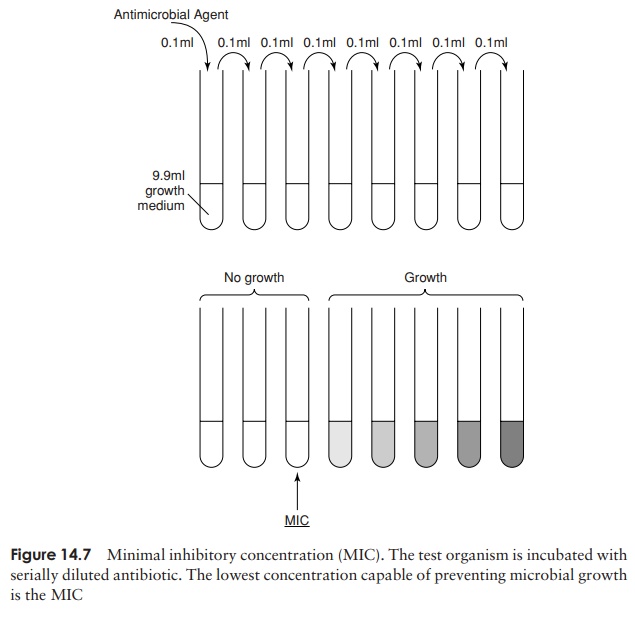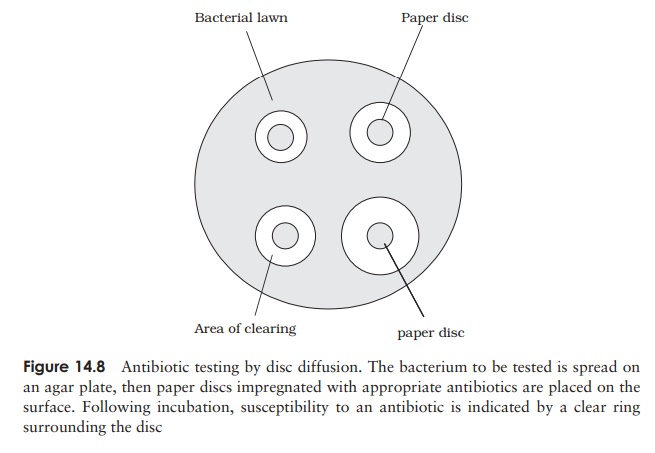Chapter: Essential Microbiology: Antimicrobial Agents
Antibiotic susceptibility testing
Antibiotic
susceptibility testing
In order to determine the most appropriate
antimicrobial agent to use against an infection, it is necessary to determine
the susceptibility of the pathogen. There are several ways of doing this, but
here we describe the two most commonly employed techniques.
The tube
dilution assay determines the minimum
inhibitory concentration (MIC) of the antibiotic, that is, the lowest
concentration at which it prevents growth of a given organism. A series of
tubes containing increasingly dilute preparations of the antibiotic is
introduced into a broth with a standard number of test organisms and incubated.
The lowest concentration in the series to show no microbial growth is the MIC
(Figure 14.7).

In the disc
diffusion method, paper discs impregnated with the antibiotic are placed on
the surface of an agar plate previously inoculated with the test organism
(Figure 14.8). The antibiotic diffuses radially outwards, becoming less
concentrated as it does so. A clear zone of inhibition appears where growth has
been inhibited. The larger this is, the more susceptible the organism.
Conditions may be standardised so that susceptibility (or otherwise) to the
antibiotic can be determined by comparing the diameter of the zone of clearing
with standard tables of values. From this, a suitable concentration for
therapeutic use can be determined.

Related Topics